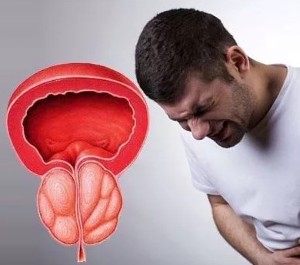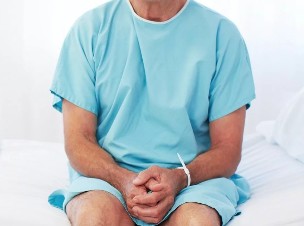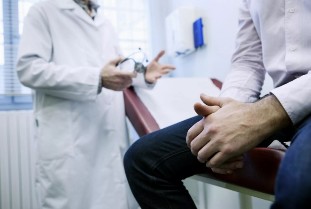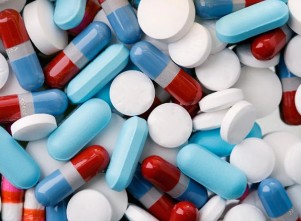What is prostatitis is well-known for a lot of men. The disease is manifested by frequent urination, pain management, erectile dysfunction, and other symptoms indicating pathology in the genitourinary system. For further diagnosis, it is necessary to consult a urologist, who finds out the cause of the disease, and explain what the disease is, what its name means, what they are, symptoms, and treatment.

The prostate gland
The prostate gland is an unpaired organ, consisting of glandular tissue, and fibrino-muscular in the film, which is in the front part of the pelvic region. The upper part is in contact with the urinary bladder, posterior — rectum, and, above all, from the pubic bone.
The main purpose of the prostate, highlighting the special secret, is that it ensures the sperms viability and motility.
This substance is produced acinus small lobules surrounded by a muscular sheath.
For the other functions of the prostate gland include the following:
- the protection of involuntary urination;
- preventing reflux of ejaculate into the bladder;
- the prevention of an infection of the upper parts of the urinary system (kidneys, ureters).
The prostate function is controlled by androgens, estrogens, steroids and pituitary hormones.
A description of the disease
The male prostatitis (prostatitis is an incorrect spelling) is the most common pathology of the prostate accompanied by inflammation, impaired urination and sexual disorders. The swelling causes a narrowing of the ducts of the prostate gland prevents the normal flow of prostatic juice, and it causes stagnation.
Most often disease of the prostate gland in men diagnosed at the age of 25 – 50 years old. Sometimes, the pathology makes itself felt, sooner or later.
Reasons
Prostatitis in men develop due to the following reasons:
- A non-contagious. Very often, the disorders of the prostate gland causes an injury to the flow of the blood and lymph circulation in the prostate gland, and congestion associated with a low ejaculation. Sometimes, the pathology develops because of too much sex, or regular shaking (e.g., motorcyclists).
- Spread. The inflammation of the prostate gland is developed on the background of the infection. It may be bacteria, viruses, and fungi, which are in the prostate via the blood or lymph from the urethra, or to a remote infected sources (throat, teeth, maxillary sinus).

Factors that might cause the effect of the prostatitis in men include the following:
- hypothermia;
- the violation;
- genetic predisposition;
- sedentary lifestyle or regular exercise fatigue;
- the regular stress;
- bad habits;
- a poor diet;
- insomnia, prolonged sleep deprivation;
- a weak immune system.
- chronic infectious processes;
- tooth decay.
The main cause of the disease is considered to be a violation of the outflow of blood capillary, which leads to stagnation, reduced local immunity, and reproduction of the bacterial flora.
The influence of the unfavorable factors that aggravates the inflammation in the prostate has extended the duration of the treatment, and to contribute to the development of complications.
Types, and symptoms.
The inflammation of the prostate gland seen in the
- pain in the pelvic area, when the flow of urine, ejaculation, and defecation);
- a frequent need to urinate;
- a discharge of blood, mucus, pus from the urethra;
- turbidity of urine;
- a reduced libido and other problems.
The severity of clinical signs depends on the underlying cause and shape of the disease.
Sharp

Acute inflammation of the prostate gland, usually accompanied by increased body temperature (axillary, rectal), and the signs of intoxication (headache, muscle pain, fever, nausea).
The patient's prostate gland squeezes the surrounding tissue, and nerve endings and results in:
- constipation;
- an injury to the toilet, to a complete interruption of the flow of urine;
- the pain in the lumbar region to the scrotum, in the groin.
Acute prostatitis in men, it often occurs on the background of infection of the prostate pathogens.
Important! Sometimes an acute inflammation of the prostate gland occurs in a background of the carried out prior to the biopsy.
Chronic
The inflammation of the prostate is often diagnosed accidentally during a routine examination or examination for other diseases.
The progression of the disease leads to distortion of the morphology and function of the prostate gland, which is the menu:
- the pain;
- dysuria;
- of sexual disorders.
Calculous
This is one of the most common complications of the chronic form of the disease is characterized by formation of stones in the acinus.
What is the influence on the prostate gland of men who have been calculous inflammation depends on the intensity. The major clinical signs emit a dull aching pain in the groin, pubis and testicles.
Prolonged lack of treatment can lead to the development of inflammation of the seminal vesicle, abscess of the prostate, USING the prostate gland.
Stagnant
What kind of of the disease prostatitis, and why it is evolving, and, you know, not all of the men.
This is the type of of the individuals who:
- move it a little bit;
- do you have bad habits;
- use the most part of the day is spent sitting;
- do not lead a regular sexual life.
- the practice of interrupted intercourse.
The signs and symptoms of inflammation of the prostate gland on the background of stagnation of the identical events, and chronic calculous form of the disease, and therefore diagnosis requires laboratory and instrumental diagnostics. The first sign that manifests congestive prostatitis in men, an erection for the deterioration of the situation.
Spread
The cause of the disease, it is clear from the title. Most often, a simple battle against bacteria, a rare virus, and a fungus. In the majority of cases of infectious inflammation of the prostate gland, is a complication of other forms.
This leads to a decline in local or General immune system up against:
- hypothermia;
- any other acute or chronic infections;
- of the prostate cancers;
- autoimmune disease;
- the disturbance to the surrounding organs;
- the wrong way of life.

What is the prostate gland in men, which was a bit of a spread type, it depends on the course of the disease. Often, the complaints are similar to the signs and symptoms of acute or chronic prostatitis.
Purulent
In advanced cases of the pathological process involved the entire body.
In the early (catarrhal), a form of purulent inflammation, is obtained by the use of the symptoms look like the symptoms of a disease of the urinary bladder – cystitis. The progression of the pain is worse, and it appeared apparent signs of intoxication.
Abscessed form of the disease is the most severe and often leads to peritonitis, sepsis and death.
The diagnosis
In the primary treatment of the gland inspected through the anus. During palpation the doctor determines the size of the structure and the contours of the body.
At this stage it is a preliminary diagnosis that you would like to verify by means of testing, including the following laboratory method:
- are placed, and the biochemical analysis of blood;
- the determination of PSA (prostate specific antigen);
- clinical and bacteriological study of the urine, prostatic secretion, smears from the urethra;
- sensitivity to antibiotics;
- semen analysis;
- the detection of C-reactive protein;
- cystoscopy and histology puncture the content.
From the instrumental being used:
- the rectal ultrasound;
- A CT or MRI of the prostate gland and other organs in the pelvis;
- biopsy.
The diagnosis is carried out in the public or private sector laboratories.
The principles of treatment

Where and how do you treat inflammation of the prostate gland, the physician will then decide, on the basis of the results of the test. If the patient's condition is satisfactory, then you can make a visit to the ambulatory, and home remedies. Otherwise, he or she explains to the man, some of the risks associated with the disease, and insisted on hospitalization. In severe cases, the patient hospitalitynet way.
The integrated
Conservative treatment includes taking medications to eliminate the underlying cause of the disease, congestion and inflammation of the prostate gland.
The list includes the following:
- antibiotics (depending on the results of the antibiogram);
- anti-inflammatory medication no steroidal origin, or corticosteroids;
- immunomodulators;
- vitamins and minerals;
- vasodilator medications (unless contraindicated).
In severe pain, prescribe pain killers or antispasmodics.
After the elimination of the acute phase, the use of physiotherapy techniques:
- the prostate massage;
- in the electrophoresis;
- a microwave treatment;
- as an ultrasound.
In severe cases, it is performed a partial or complete prostatectomy (removal of the prostate gland). Prostatitis with the stones, you are treated in a similar pattern, but a massage is an androgen-dependent organ, it is absolutely contraindicated.
Home
What is prostatitis and how to treat it, you want to be, you know, a lot of men. For the outpatient treatment it is more of an emergency admission to the hospital, you should implement all the recommendations of the doctor to take the prescribed medication, avoid precipitating factors, and not to self-medicate. In addition to the basic therapeutic scheme is a useful medicinal herb, which is elected by a healthcare professional.
To eliminate disease healthy:
- chamomile;
- peony;
- the seeds and leaves of the plantain;
- the hives;
- burdock root;
- the seeds of the pumpkin.

To prevent
The best prevention of prostatitis in men with regular access to a doctor, and an adjustment of way of life, which must include:
- daily physical exercise;
- a regular girl;
- a proper diet;
- a full night's sleep.
Stress, bad habits, and other factors that are, in contrast, should be deleted. Prostatitis in men, often leading to treat erectile dysfunction.
To eliminate this disease, and prescribe drugs from the group inhibitors PDE-5. If this does not help, you need counseling.






































